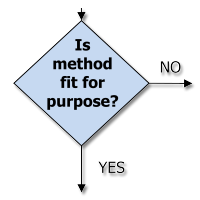Setting Target Measurement Uncertainty
- Details
- Last Updated: Tuesday, 21 May 2024 20:24
Contents
 Measurement results are only fit for purpose if the reported uncertainty is correct and has a magnitude small enough for the intended use. The target measurement uncertainty (target MU) is the maximum admissible uncertainty defined for a specific measurement goal. This information leaflet provides a short and accessible introduction to the idea of target measurement uncertainty.
Measurement results are only fit for purpose if the reported uncertainty is correct and has a magnitude small enough for the intended use. The target measurement uncertainty (target MU) is the maximum admissible uncertainty defined for a specific measurement goal. This information leaflet provides a short and accessible introduction to the idea of target measurement uncertainty.
For detailed information on setting a target measurement uncertainty, see the Eurachem/CITAC guide "Setting and Using Target Uncertainty in Chemical Measurement"
Availability
- View/download the document in Czech (pdf, 527 kB, published 2018-12-17)
- View/download the document in English (pdf, 440 kB, published 2018-07-16)
- View/download the document in Farsi (pdf, 1.2 Mb, published 2020-01-07)
- View/download the document in German (pdf, 750 kB, published 2019-05-19)
- View/download the document in Spanish (pdf, 800 kB, published 2018-07-26)
- View/download the document in Turkish (pdf, 1.1 Mb, published 2019-05-19)
- View/download the document in Ukrainian (pdf, 310 kb, published 2019-10-15)
Translations
Translation into other languages is encouraged for members of Eurachem. Other offers of translation should be directed to the Eurachem Secretariat for permission. The Eurachem policy on maintenance and development of Eurachem guidance, available on the Policies page, gives further information on translation.





 This leaflet, prepared by the Eurachem
This leaflet, prepared by the Eurachem 